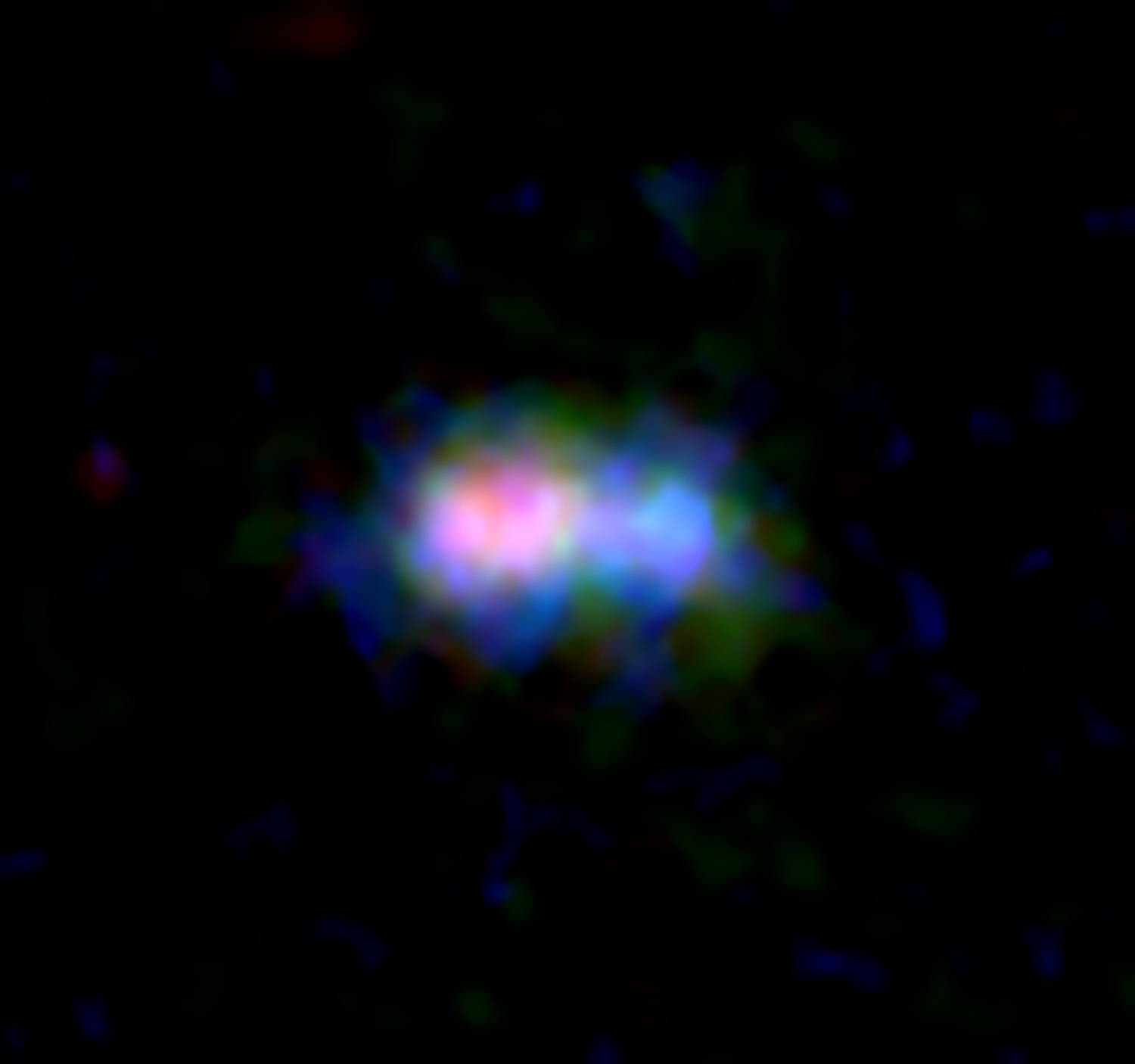ALMA | NAOJ | NRAO | ESO | 2019 Mar 19
Researchers have detected a radio signal from abundant interstellar dust in MACS0416_Y1, a galaxy 13.2 billion light-years away in the constellation Eridanus. Standard models can’t explain this much dust in a galaxy this young, forcing us to rethink the history of star formation. Researchers now think MACS0416_Y1 experienced staggered star formation with two intense starburst periods 300 million and 600 million years after the Big Bang with a quiet phase in between.
Stars are the main players in the Universe, but they are supported by the unseen backstage stagehands: stardust and gas. Cosmic clouds of dust and gas are the sites of star formation and masterful storytellers of the cosmic history.
“Dust and relatively heavy elements such as oxygen are disseminated by the deaths of stars,” said Yoichi Tamura, an associate professor at Nagoya University and the lead author of the research paper, “Therefore, a detection of dust at some point in time indicates that a number of stars have already formed and died well before that point.”
Using ALMA (Atacama Large Millimeter/submillimeter Array), Tamura and his team observed the distant galaxy MACS0416_Y1. Because of the finite speed of light, the radio waves we observe from this galaxy today had to travel for 13.2 billion years to reach us. In other words, they provide an image of what the galaxy looked like 13.2 billion years ago, which is only 600 million years after the Big Bang. ...
Detection of the Far-Infrared [O III] and Dust Emission in a Galaxy at Redshift 8.312:
Early Metal Enrichment in the Heart of the Reionization Era ~ Yoichi Tamura et al
- Astrophysical Journal 874(1):27 (20 Mar 2019) DOI: 10.3847/1538-4357/ab0374
arXiv.org > astro-ph > arXiv:1806.04132 > 11 Jun 2018 (v1), 11 Feb 2019 (v2)
